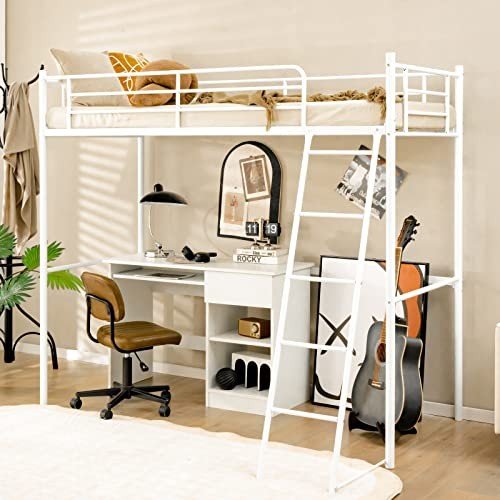The Ultimate Guide to Bunk Beds for Children: Safety, Styles, and Benefits
When it concerns styling a child's room, parents often deal with the dual challenge of maximizing space while ensuring convenience and performance. in the know have emerged as a popular solution that addresses these needs, using not just sleeping arrangements however also adding to a room's aesthetic. In this extensive guide, we will explore different elements of kids's bunk beds, concentrating on their advantages, security functions, styles, and factors to consider for parents considering this purchase.
Table of Contents
- Advantages of Bunk Beds
- Security Features to Consider
- Types of Bunk Beds
- Design and Style Options
- Maintenance Tips
- Frequently Asked Questions (FAQs)
1. Benefits of Bunk Beds
Bunk beds provide various advantages for kids and their moms and dads. Here are some key benefits:
- Space-Efficiency: Bunk beds are an exceptional option for smaller rooms. By stacking one bed on top of another, more flooring space is offered for play, storage, or study locations.
- Cost-Effective: When children share spaces, bunk beds can minimize the requirement for acquiring 2 separate beds, therefore saving cash.
- Fosters Social Interaction: Bunk beds can help siblings or pals bond by sharing a space, creating chances for social advancement.
- Enjoyable Factor: The concept of sleeping "up high" includes a lively aspect to bedtime, making the transition to sleeping alone simpler for some children.
- Versatile Design: Bunk beds come in various designs, colors, and designs to match any space theme, permitting for modification that reflects the kid's personality.
2. Safety Features to Consider
Security is critical when it comes to kids's furniture, specifically in the case of bunk beds. Here are some critical safety functions to examine:
| Safety Feature | Description |
|---|---|
| Strong Construction | Frames made from strong wood or metal are chosen. |
| Guardrails | Should be at least 5 inches high and extend along both sides of the upper bunk. |
| Ladder Design | Make sure ladders are securely attached and have non-slip steps. |
| Mattress Size & & Fit | Should fit comfortably within the frame to avoid spaces. |
| Weight Limit | Always comply with the producer's weight limit suggestions. |
3. Kinds Of Bunk Beds
Bunk beds are available in numerous designs, accommodating different requirements, preferences, and space sizes. Here are some common types:
- Standard Bunk Bed: The many standard type, with one bed on top of another.
- Loft Bed: Features a high upper bed with space underneath for a desk or play area.
- Futon Bunk Bed: Combines a top bunk with a futon on the bottom, supplying versatility for seating and sleeping.
- L-Shaped Bunk Bed: This design has the leading bunk set at a perpendicular angle to the bottom, creating a small corner area.
- Triple Bunk Bed: Accommodates three children utilizing stacked beds, ideal for big families or pajama parties.
4. Style and Style Options
When it comes to picking a style for kids's bunk beds, the options are essentially unlimited. Here are some popular designs:
- Traditional Style: Often made from wood, these bunk beds include elaborate details and are ideal for classic or rustic-themed spaces.
- Modern Style: Characterized by tidy lines and minimalist styles, modern bunk beds can be made of metal or wood.
- Themed Bunk Beds: Some brand names use bunk beds formed like castles, cars, or play houses, making bedtime less of a chore.
- Convertible Bunk Beds: These can be separated into two specific beds, providing flexibility as kids grow.
- Colorful Options: Bunk beds in dynamic colors can include a sense of happiness and playfulness to any room.
5. Upkeep Tips
Keeping a bunk bed is important for longevity and security. Here are some pointers:
- Regular Inspections: Check for loose screws or bolts every couple of months and tighten them as needed.
- Cleaning up: Wipe down frames routinely to prevent dust build-up; consider using a vacuum for hard-to-reach locations.
- Bed mattress Care: Rotate bed mattress frequently and use protective covers to prolong their life.
- Look for Wear and Tear: Look for any signs of damage in the wood or metal and think about replacing parts if required.
- Teach Kids Safety Rules: Encourage kids to use ladders properly and ensure they understand the safety features of their bed.
6. Frequently Asked Questions (FAQs)
Q1: What age is suitable for oversleeping a top bunk?
A1: Typically, children aged 6 and older are advised for upper bunk sleeping, as they have the needed motor skills to climb securely.
Q2: Do bunk beds feature a bed mattress?
A2: Most bunk beds are sold as frames only, so you will need to buy mattresses individually. Guarantee that the bed mattress fits the frame snugly.
Q3: Can bunk beds be separated later on?
A3: Many styles enable conversion into two individual beds, supplying flexibility for future requirements.
Q4: How can I ensure my child's security on a bunk bed?
A4: Comply with security requirements and make sure guardrails, a durable frame, and a secured ladder remain in place.
Q5: Are there weight limitations on bunk beds?
A5: Yes, constantly examine the producer's specifications relating to weight limits to make sure security.
Bunk beds for kids can serve multiple purposes while ensuring safety and design. With varied designs and models readily available on the market, moms and dads can find a system that not just maximizes bedroom space however also shows their kid's distinct tastes. Just like any furnishings, comprehending security features, maintenance, and how they suit a child's lifestyle will guarantee that these beds stay a useful furnishings option for several years to come.
Through cautious consideration and adherence to safety guidelines, bunk beds can offer a lasting, fun, and practical sleeping option that kids love.

